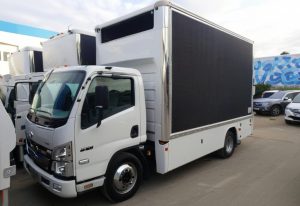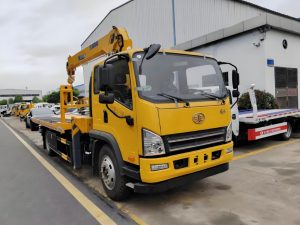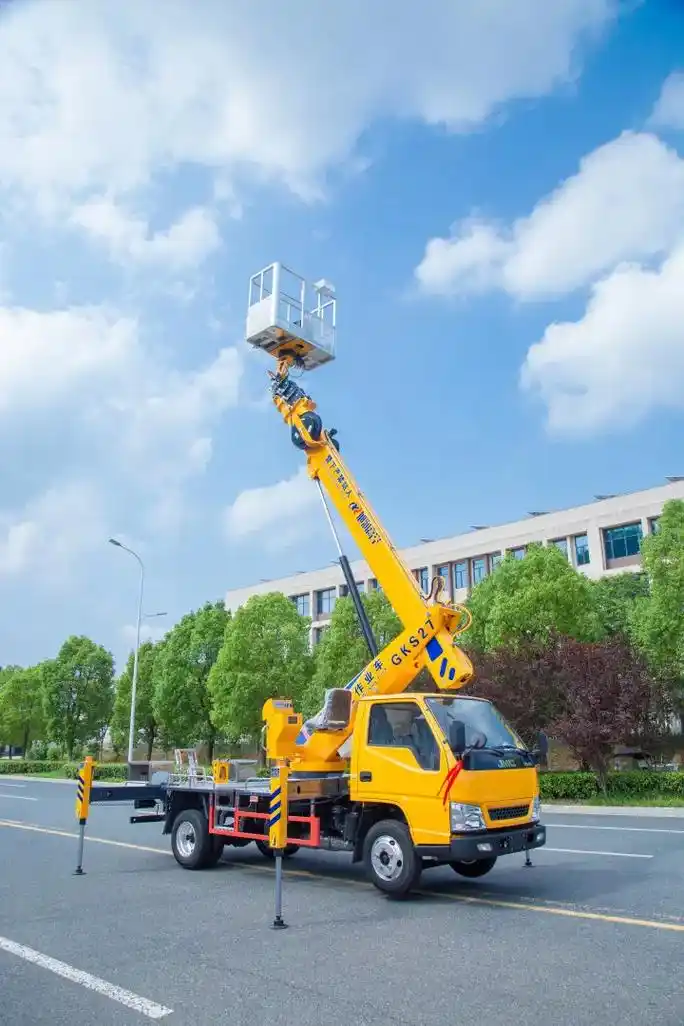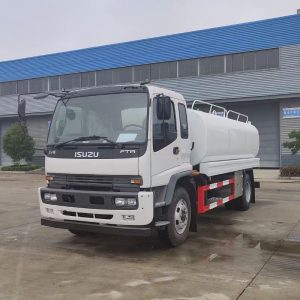Table of Contents
ToggleIntroduction to Bulk Feed Trucks
In the expansive world of agriculture, where vast fields stretch beyond the horizon and the hum of machinery is a constant companion, bulk feed trucks stand as the unsung heroes. These mechanical titans are indispensable in the agricultural supply chain, quietly ensuring that livestock receive their sustenance. Imagine a day without these trucks—farmers scrambling to transport animal feed in small quantities, akin to filling a lake with a bucket. It’s an exercise in futility. Instead, bulk feed trucks provide a streamlined solution, transporting large volumes of feed efficiently and effectively. But what exactly makes these trucks tick? Let’s embark on a journey to uncover the intricate workings and pivotal role of bulk feed trucks.
What is a Bulk Feed Truck?
At its core, a bulk feed truck is essentially a mobile feed storage bin with wheels, designed to transport and deliver large quantities of animal feed. Think of it as a colossal metal caterpillar, segmented into compartments, each carrying different types of feed. These trucks are engineered to meet the demands of modern farming, where efficiency and reliability are paramount. With their robust design, they can navigate rough terrains and withstand the rigors of long-distance travel, ensuring that feed reaches its destination unspoiled and on time. In essence, these trucks are the logistical backbone of animal agriculture, bridging the gap between feed production plants and farms.

Key Components of a Bulk Feed Truck
Understanding the anatomy of a bulk feed truck is like peering under the hood of a finely tuned sports car. Every component is meticulously designed to fulfill a specific function, ensuring seamless operation. At the heart of the truck lies the storage tank, usually crafted from durable materials like stainless steel or aluminum. These tanks are often compartmentalized, allowing for the transport of different feed types in a single journey. Complementing the tank is a sophisticated system of augers or pneumatic systems, responsible for the smooth transfer of feed into and out of the truck. Hydraulic systems play a crucial role as well, powering the mechanisms that ensure efficient loading and unloading. Together, these components form a symphony of engineering, each part working in harmony to deliver feed efficiently.
How Bulk Feed Trucks Operate
Operating a bulk feed truck requires a blend of technical know-how and precision, akin to a conductor orchestrating a complex musical piece. The process begins at the loading site, where feed is transferred into the truck’s compartments. Depending on the setup, this may involve conveyor belts, augers, or vacuum systems that deftly move feed from storage silos into the truck. The goal here is to maximize load efficiency while minimizing spillage, ensuring that every ounce of feed is accounted for.
Once filled, the truck embarks on its journey to the farm. Upon arrival, the unloading process commences. This is where the truck’s sophisticated delivery systems come into play. Hydraulic augers or pneumatic blowers efficiently transfer the feed from the truck to storage bins or directly to feeders. This process is designed for speed and precision, ensuring minimal feed loss and contamination. The entire operation is a testament to human ingenuity, streamlining what would otherwise be a labor-intensive endeavor.
Advantages of Using Bulk Feed Trucks
So, why are bulk feed trucks a staple in the agricultural industry? The answer lies in their myriad advantages, which extend beyond mere transportation.
Efficiency and Time-Saving
Consider the logistics of transporting feed in small quantities—multiple trips, increased labor, and a higher risk of delays. Bulk feed trucks eliminate these inefficiencies by moving large volumes of feed in a single journey. This not only saves time but also reduces the workload on farm personnel, allowing them to focus on other critical tasks. Think of it as upgrading from a slow-moving personal vehicle to a high-speed train, drastically cutting down travel time and maximizing productivity.
Cost-Effectiveness
In addition to saving time, bulk feed trucks are highly cost-effective. By reducing the number of trips required to transport feed, they lower fuel consumption and decrease wear and tear on vehicles. This translates to significant savings in operational costs, much like buying in bulk at a wholesale store—higher initial investment but substantial savings in the long run. Moreover, the ability to transport multiple feed types in a single trip further enhances their economic advantage, minimizing the need for additional transport vehicles.
Types of Bulk Feed Trucks
Just as there are different tools for different jobs, bulk feed trucks come in various types, each tailored to specific agricultural needs.
Small-Scale vs. Large-Scale Trucks
Small-scale trucks are designed for farms with limited space or lower feed demands. These nimble vehicles are perfect for navigating tight farm roads and delivering feed to smaller operations. On the other hand, large-scale trucks are the giants of the road, built to transport massive quantities of feed across long distances. They are the workhorses of large farming enterprises, where high feed demand necessitates frequent and voluminous deliveries.
Specialized Bulk Feed Trucks
In addition to size variations, some bulk feed trucks come equipped with specialized features. For instance, certain models offer temperature control capabilities, ensuring that sensitive feeds remain fresh during transport. Others may include built-in mixing systems, allowing for the combination of different feed types en route to their destination. These specialized trucks are the Swiss Army knives of the agricultural world, providing tailored solutions to meet specific feed transport challenges.
Maintenance and Safety Considerations
Ensuring the longevity and safe operation of bulk feed trucks is paramount, requiring a proactive approach to maintenance and safety.
Routine Maintenance Practices
Routine maintenance is the lifeblood of any mechanical system, and bulk feed trucks are no exception. Regular inspections of hydraulic systems, tires, and mechanical components are essential to prevent breakdowns and ensure smooth operation. This involves checking for signs of wear and tear, lubricating moving parts, and replacing worn-out components. Think of it as a health check-up for your truck, keeping it in peak condition and ready to tackle the demands of feed transport.
Safety Protocols
Safety is a top priority in the operation of bulk feed trucks. Operators must be well-trained in handling the machinery, with a thorough understanding of emergency protocols. This includes knowing how to safely load and unload feed, manage mechanical issues on the road, and respond to potential hazards. Much like a pilot navigating a plane, truck operators must be prepared for any situation, ensuring the safe delivery of feed and the well-being of all involved.
Innovations in Bulk Feed Truck Technology
In an era where technology is the driving force behind most industries, bulk feed trucks are not left behind. The integration of cutting-edge technology into these vehicles is transforming how they operate, ensuring they meet the evolving demands of modern agriculture.
Automation and Smart Features
One of the most significant advancements in bulk feed truck technology is the incorporation of automation and smart features. Modern trucks are increasingly equipped with GPS systems, automated loading and unloading mechanisms, and even remote monitoring capabilities. Imagine being able to track your truck’s progress in real-time, adjust feed delivery schedules remotely, or receive alerts about maintenance needs—all from the comfort of your office. These smart features not only enhance operational efficiency but also allow for better planning and resource management, much like having a digital assistant that keeps everything running smoothly.
Automation also extends to the actual loading and unloading processes, where precision sensors and automated controls ensure that feed is transferred with minimal human intervention. This reduces the potential for human error and enhances the safety and speed of operations. It’s akin to having a robotic arm that flawlessly executes tasks, freeing human operators to focus on other essential duties.
Environmental Considerations
As the world becomes more conscious of environmental sustainability, the agricultural industry is also making strides in this area. Bulk feed trucks are seeing innovations that aim to reduce their carbon footprint and improve fuel efficiency. For instance, manufacturers are exploring the use of alternative fuels and hybrid engines, which significantly cut down emissions. Think of it as trading in a traditional gas-guzzler for a sleek, eco-friendly hybrid—good for the planet and your pocketbook in the long term.
Additionally, aerodynamic designs and lightweight materials are being used to enhance fuel efficiency further. By reducing drag and overall weight, these trucks consume less fuel while maintaining their robust capabilities. This is a win-win situation, aligning with global sustainability goals and reducing operational costs for farmers.
Challenges Faced by Bulk Feed Truck Operators
Despite the numerous advancements and advantages, operating bulk feed trucks is not without its challenges. These hurdles are part of the daily grind for operators, requiring skill, patience, and adaptability.
One of the primary challenges is navigating rural and often poorly maintained roads. These conditions can lead to increased wear and tear on vehicles and require careful maneuvering to avoid accidents. It’s somewhat like driving a race car on a dirt track—requiring finesse, expertise, and constant vigilance.
Weather conditions also pose significant challenges. Rain, snow, and extreme temperatures can affect the truck’s performance and the quality of the feed being transported. Operators must be prepared to adapt their routes and schedules to accommodate these unpredictable elements, much like a seasoned sailor adjusting sails to navigate a stormy sea.
Mechanical breakdowns are another concern, highlighting the importance of regular maintenance. Even with the best precautions, unexpected issues can arise, requiring operators to be proficient in basic repairs and problem-solving. It’s akin to being a handyman on the go, ready to tackle any mechanical challenges that come your way.
The Future of Bulk Feed Trucks
Looking ahead, the future of bulk feed trucks is bright and full of potential. As technology continues to evolve, we can anticipate even more innovative solutions that will further enhance their efficiency and sustainability.
One exciting possibility is the development of autonomous bulk feed trucks. While still in the early stages, autonomous technology offers the promise of reducing the need for human drivers, potentially lowering labor costs and improving delivery precision. Imagine a fleet of self-driving trucks that operate around the clock, ensuring seamless feed delivery with minimal downtime. It’s a futuristic vision that could revolutionize the agricultural supply chain.
Additionally, advancements in data analytics could play a significant role in optimizing feed delivery routes and schedules. By harnessing the power of big data, farmers can make informed decisions that reduce transportation costs and improve overall efficiency. It’s like having a crystal ball that provides insights into the most efficient paths and practices, ensuring that every delivery is executed with precision and foresight.
Conclusion
Bulk feed trucks are more than just vehicles; they are the lifeline of modern agriculture, ensuring that livestock receive their nourishment efficiently and reliably. As we’ve explored, these trucks embody a fascinating blend of engineering, technology, and innovation, continually evolving to meet the demands of the industry.
From their robust design and sophisticated components to the integration of smart technology and sustainable practices, bulk feed trucks are a testament to human ingenuity. They navigate challenges with grace and adapt to changing times, driving the agricultural industry toward a future of efficiency and sustainability.







